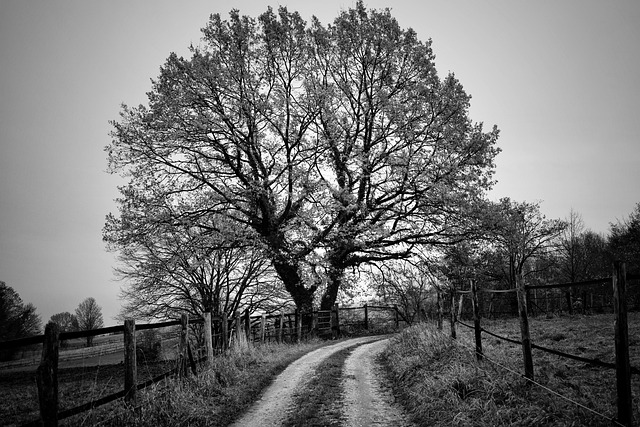“In the aftermath of storms, many Mauldin, SC residents face the challenge of residential property clearing for landscaping projects. This comprehensive guide navigates the process from assessing storm damage for landscaping in Mauldin SC to transforming damaged sites into vibrant landscapes. Learn effective preparation techniques, efficient clearance methods, safety measures, and regulatory insights to successfully revive your outdoor spaces after storms. Discover how to turn potential hurdles into opportunities for beautiful new designs.”
- Assessing Storm Damage for Landscaping in Mauldin SC
- Preparing Properties for New Landscape Designs
- Efficient Clearance Techniques After Storms
- Safety Measures During Residential Property Clearing
- Navigating Regulations for Landscaping Projects in Mauldin
- Transforming Storm-Damaged Sites into Beautiful Landscapes
Assessing Storm Damage for Landscaping in Mauldin SC
After a severe storm, many homeowners in Mauldin, SC, turn their attention to assessing and clearing their residential properties. Storm damage cleanup is an essential step before embarking on any landscaping project, as it can significantly impact the overall design and health of your garden. In light of this, it’s crucial to thoroughly evaluate the extent of the storm’s impact.
Start by conducting a meticulous inspection of your property, looking for any structural damages, broken branches, or fallen trees. These elements may require professional assistance for safe removal. Documenting the damage through photos is also beneficial for insurance claims and future reference. With the increasing frequency of severe weather events, prompt storm damage cleanup in Mauldin SC can help ensure your landscaping project runs smoothly, creating a vibrant outdoor space that enhances your home’s beauty and value.
Preparing Properties for New Landscape Designs
Before transforming a residential property with new landscape designs, it’s essential to prepare the space for a seamless transition. One effective method is to begin with storm damage cleanup for residential properties in Mauldin, SC. This initial step ensures that any debris or destruction caused by weather events is removed, creating a clean canvas for landscaping professionals to work their magic. By addressing these issues beforehand, homeowners can avoid potential delays and ensure the longevity of their new outdoor spaces.
Preparing the property involves removing fallen trees, trimming overgrown vegetation, and clearing out any structures or items damaged during storms. This meticulous process allows designers to focus on crafting a unique landscape that meets the owner’s vision while also considering safety and functionality. A well-prepared property sets the stage for an exceptional landscaping project, making it a crucial step in creating outdoor oases that enhance the overall beauty and value of residential areas.
Efficient Clearance Techniques After Storms
After a storm hits, efficient storm damage cleanup for residential properties in Mauldin, SC is crucial to minimize disruption and get homes back to normal quickly. The first step involves assessing the extent of the damage, which can range from broken branches and fallen trees to more severe structural issues. For smaller debris like leaves and twigs, utilizing tools such as rakes, brooms, and leaf blowers can expedite the clearing process.
For larger items like tree trunks and branches, professional equipment like chippers and stump grinders may be necessary. These machines efficiently break down debris into manageable pieces, making it easier to remove from the property. Additionally, proper disposal or recycling of cleared materials should be considered, further streamlining the cleanup process and contributing to a more sustainable environment.
Safety Measures During Residential Property Clearing
When embarking on residential property clearing for landscaping projects, especially after storm damage in Mauldin, SC, safety should be the top priority. Before beginning any cleanup, ensure that all hazardous materials and debris are properly identified and handled. This includes structural remnants, sharp objects, and potential toxins like mold or asbestos, which require specialized handling. Safety gear such as gloves, goggles, and masks are essential to protect against physical harm and health risks.
Regular safety inspections of the area should be conducted to identify any remaining dangers. Following local regulations for storm damage cleanup is crucial to ensure that both the process and its outcomes meet safety standards. Proper disposal methods must be employed for all debris and materials, preventing further environmental or personal harm.
Navigating Regulations for Landscaping Projects in Mauldin
In Mauldin, South Carolina, residents undertaking landscaping projects must navigate a series of regulations aimed at maintaining community standards and environmental integrity. For those dealing with storm damage cleanup for residential properties, understanding these rules is paramount. Local ordinances often dictate what types of debris can be removed, how construction waste is disposed of, and the permitted scope of property alterations.
Before beginning any significant landscaping or clearing efforts, it’s crucial to contact local authorities to obtain necessary permits. This ensures compliance with zoning laws and safety regulations. For instance, removing large trees or altering drainage patterns may require specific approvals. By adhering to these guidelines, homeowners can avoid potential fines and ensure their projects contribute positively to the Mauldin community and landscape.
Transforming Storm-Damaged Sites into Beautiful Landscapes
After a severe storm, residential properties in Mauldin, SC, often bear the brunt of its destructive force. Storm damage cleanup is not just about removing debris; it’s an opportunity to transform these damaged sites into beautiful landscapes. The first step involves assessing the extent of the damage and identifying safe areas for renovation. This process requires careful navigation through the remaining structures and hazardous materials.
Once safety concerns are addressed, the real magic begins. Skilled professionals can turn these storm-damaged lots into lush green spaces, incorporating resilient plants that can withstand future weather events. By focusing on eco-friendly solutions, such as native vegetation and sustainable drainage systems, homeowners not only enhance their properties’ aesthetics but also contribute to the local ecosystem’s health and resilience.
